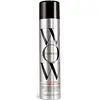What's inside
What's inside
 Benefits
Benefits

 Concerns
Concerns

 Ingredients Side-by-side
Ingredients Side-by-side

Hydrofluorocarbon 152a
Dimethyl Ether
SolventSd Alcohol 40-B
AstringentVp/Va Copolymer
Zeolite
AbsorbentParfum
MaskingGlycerin
HumectantWater
Skin ConditioningAcetyl Triethyl Citrate
MaskingPEG/PPG-17/18 Dimethicone
EmulsifyingHelianthus Annuus Seed Extract
Skin ConditioningAmp-Isostearoyl Hydrolyzed Wheat Protein
CleansingButylene Glycol
HumectantBenzophenone-4
UV AbsorberIsopropyl Alcohol
SolventActinidia Chinensis Fruit Extract
EmollientAloe Barbadensis Leaf Extract
EmollientHedychium Coronarium Root Extract
MaskingMangifera Indica Fruit Extract
Skin ConditioningPassiflora Incarnata Extract
AstringentCitrullus Lanatus Fruit Extract
Skin ConditioningLeontopodium Alpinum Flower/Leaf Extract
Skin ConditioningLitchi Chinensis Fruit Extract
Skin ConditioningPhenoxyethanol
PreservativeStyrax Benzoin Resin Extract
MaskingChlorphenesin
AntimicrobialSodium Benzoate
MaskingPotassium Sorbate
PreservativeBenzoic Acid
MaskingCitric Acid
BufferingSorbic Acid
PreservativeLimonene
PerfumingHexyl Cinnamal
PerfumingLinalool
PerfumingCitral
PerfumingHydrofluorocarbon 152a, Dimethyl Ether, Sd Alcohol 40-B, Vp/Va Copolymer, Zeolite, Parfum, Glycerin, Water, Acetyl Triethyl Citrate, PEG/PPG-17/18 Dimethicone, Helianthus Annuus Seed Extract, Amp-Isostearoyl Hydrolyzed Wheat Protein, Butylene Glycol, Benzophenone-4, Isopropyl Alcohol, Actinidia Chinensis Fruit Extract, Aloe Barbadensis Leaf Extract, Hedychium Coronarium Root Extract, Mangifera Indica Fruit Extract, Passiflora Incarnata Extract, Citrullus Lanatus Fruit Extract, Leontopodium Alpinum Flower/Leaf Extract, Litchi Chinensis Fruit Extract, Phenoxyethanol, Styrax Benzoin Resin Extract, Chlorphenesin, Sodium Benzoate, Potassium Sorbate, Benzoic Acid, Citric Acid, Sorbic Acid, Limonene, Hexyl Cinnamal, Linalool, Citral
Ingredients Explained
These ingredients are found in both products.
Ingredients higher up in an ingredient list are typically present in a larger amount.
Acetyl Triethyl Citrate is a fragrance.
Glycerin is already naturally found in your skin. It helps moisturize and protect your skin.
A study from 2016 found glycerin to be more effective as a humectant than AHAs and hyaluronic acid.
As a humectant, it helps the skin stay hydrated by pulling moisture to your skin. The low molecular weight of glycerin allows it to pull moisture into the deeper layers of your skin.
Hydrated skin improves your skin barrier; Your skin barrier helps protect against irritants and bacteria.
Glycerin has also been found to have antimicrobial and antiviral properties. Due to these properties, glycerin is often used in wound and burn treatments.
In cosmetics, glycerin is usually derived from plants such as soybean or palm. However, it can also be sourced from animals, such as tallow or animal fat.
This ingredient is organic, colorless, odorless, and non-toxic.
Glycerin is the name for this ingredient in American English. British English uses Glycerol/Glycerine.
Learn more about GlycerinWe don't have a description for Hydrofluorocarbon 152a yet.
Linalool is a fragrance and helps add scent to products. It's derived from common plants such as cinnamon, mint, citrus, and lavender.
Like Limonene, this ingredient oxidizes when exposed to air. Oxidized linalool can cause allergies and skin sensitivity.
This ingredient has a scent that is floral, spicy tropical, and citrus-like.
Learn more about LinaloolParfum is a catch-all term for an ingredient or more that is used to give a scent to products.
Also called "fragrance", this ingredient can be a blend of hundreds of chemicals or plant oils. This means every product with "fragrance" or "parfum" in the ingredients list is a different mixture.
For instance, Habanolide is a proprietary trade name for a specific aroma chemical. When used as a fragrance ingredient in cosmetics, most aroma chemicals fall under the broad labeling category of “FRAGRANCE” or “PARFUM” according to EU and US regulations.
The term 'parfum' or 'fragrance' is not regulated in many countries. In many cases, it is up to the brand to define this term.
For instance, many brands choose to label themselves as "fragrance-free" because they are not using synthetic fragrances. However, their products may still contain ingredients such as essential oils that are considered a fragrance by INCI standards.
One example is Calendula flower extract. Calendula is an essential oil that still imparts a scent or 'fragrance'.
Depending on the blend, the ingredients in the mixture can cause allergies and sensitivities on the skin. Some ingredients that are known EU allergens include linalool and citronellol.
Parfum can also be used to mask or cover an unpleasant scent.
The bottom line is: not all fragrances/parfum/ingredients are created equally. If you are worried about fragrances, we recommend taking a closer look at an ingredient. And of course, we always recommend speaking with a professional.
Learn more about ParfumPEG/PPG-17/18 Dimethicone is a type of silicone.
We don't have a description for Vp/Va Copolymer yet.
We don't have a description for Zeolite yet.